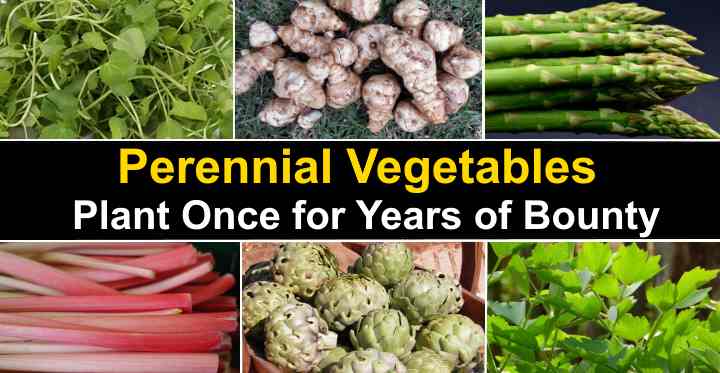Perennial vegetables provide a continuous supply of delicious and nutritious produce each year. perennial food plants in your garden may be grown without the need of an annual planting. Since you don’t have to seed, plant, or prepare your perennial vegetables in the spring, you’ll have less work to do. As a result, you can enjoy the benefits of perennial crops for years after you plant them.
Vegetables are typically seen as annuals, unlike fruit trees, which are perennials. Nonetheless, the plant kingdom is a fairly diverse place, and various types of veggies reappear on a yearly basis. Globe artichoke, garlic, asparagus, onion types, and sorrel are among the popular vegetables that grow perennially.
You can harvest and replant these vegetables every year after that. If you want to harvest annual crops, check out this guide on the top perennial veggies to cultivate. Let’s learn a bit more about these delicious veggies before we list the top perennial edible plants.
Perennial Vegetables—What Are They?
Plants that grow year after year without having to be replanted are referred to as perennial crops. The plants establish deep roots that are dormant in the winter. Perennial veggies develop from the existing roots, unlike annual veggies that must be replanted in the spring.
Plants that only live for two years are known as biennial vegetables. Carrots, for example, are a biennial vegetable that can be eaten. The roots are usually harvested every year, so even these vegetables are grown as annuals.
Why Plant Perennial Vegetables?
Let’s examine four benefits of growing edible perennial plants in your yard.
1. Perennial Edible Plants are Easy to Care For
Growing perennial vegetables is a low-maintenance crop, which is one of their most significant benefits. After you’ve planted the veggies, they’ll automatically grow each year without your intervention.
Perennial veggies become tolerant to drought and severe weather conditions as they develop. All you have to do is make sure that they don’t harvest the root, and they’ll return year after year.
2. Perennial Crops Improve the Soil
Perennial veggies, in addition to nourishing the earth and making your garden more beautiful, boost soil health. Deep roots draw up essential minerals and nutrients, which help promote healthy soil. Moreover, as a result of the organic material that naturally decomposes the plants’ leaves, the land where perennials thrive is generally more rich than where annual veggies thrive.
Perennial crops decrease disturbance, which is another benefit to soil health. You’ll need to till the soil before you can grow annuals. The soil integrity may be jeopardized during this preparation process, resulting in fewer beneficial grubs, fungus, and bacteria. Perennial vegetables aid neighboring plants to flourish by balancing nitrogen levels in the soil.
3. Growing Perennial Vegetables Increases Harvest
Edible perennials are suitable for harvest at different times of the year since they continue to grow throughout the year. In addition, some perennial crops may be ready to harvest while you’re busy working hard to prepare a vegetable patch for annual plants.
4. Perennial vegetables beautify yards
Perennial greens enhance the beauty of garden landscapes in addition to producing a yearly abundant harvest. When other plants aren’t blooming, edible perennials produce lovely flowers that draw pollinators, such as bees and butterflies.
Perennials that Grow as Annuals

Several perennial vegetables are grown as annuals, such as potatoes. Tomatoes, for example, are a kind of perennial plant that is botanically fruit but is grown as a vegetable in the culinary world. The tropical nightshade plants can’t handle the cold winters, so tomatoes are grown as annuals.
Another example of a perennial vegetable that is grown as an annual is potatoes. Potatoes should be rotated every other year to avoid pests and diseases; this encourages healthy development. Kale is a leafy perennial plant that becomes leggy and needs to be replaced.
The Drawback of Planting Perennial Vegetables
Growing edible perennial crops in a vegetable patch is less upkeep, but it’s not for everyone. It can take a long time for perennial vegetables to establish themselves. As a result, you’ll need a long-term gardening strategy. Some of the downsides of perennial vegetable cultivation are as follows: A few examples are as follows:
- Perennials, like annual vegetables, taste best when they’re young and haven’t bloomed yet.
- Perennial greens cannot be free of pests and disease because to crop rotation.
The Best Perennial Vegetables for Your Garden (With Pictures)
All of the vegetables on this list grow as perennials. However, it’s good to remember that, depending on your climate, some plants may only grow as annuals.
Asparagus (Asparagus officinalis)

The most well-known perennial vegetable is asparagus. Asparagus produces delectable edible stems year after year once it is planted in a vegetable patch. Asparagus grows best as a perennial in full sun and moist, well-draining soil. Before you can savor the delectable shoots, it must grow for two to three years.
Asparagus has another advantage: in the summer, it produces delicate flowers. Several bees are drawn to your yard by these blossoms. Zone 3 is the zone where asparagus thrives.
Garlic (Allium sativum)

Garlic is listed as a perennial vegetable, which may surprise you. Garlic is commonly grown as an annual, with the bulbs harvested in the summer following their planting in the fall. If you leave a few garlic bulbs in the earth, they will die back and then regrow later in the season if you don’t remove them.
As it grows from year to year, perennial garlic produces dense clumps. To help the allium vegetable thrive, you’ll have to split the roots. You will, however, probably never have to buy fresh garlic from the store again if you leave it to grow as a perennial. USDA zone 2 garlic is a hardy perennial herb.
Horseradish (Armoracia rusticana)

Horseradish is another root vegetable that thrives as a perennial. Broccoli, cabbage, and mustard are all spices that may be found in this hot, peppery vegetable. Several dishes are spiced up with this lengthy, chunky white perennial root. You have to dig up the root and replant the offshoot of horseradish in order for it to grow as a perennial vegetable.
In your vegetable garden, horseradish is a very simple plant to grow. You can also purchase a fresh root and put it in the ground at the market. The vegetable sprouts huge green leaves and attractive blooms above the ground. In zones 2 to 9, this hot perennial herb is cold tolerant.
Globe artichokes (Cynara scolymus)
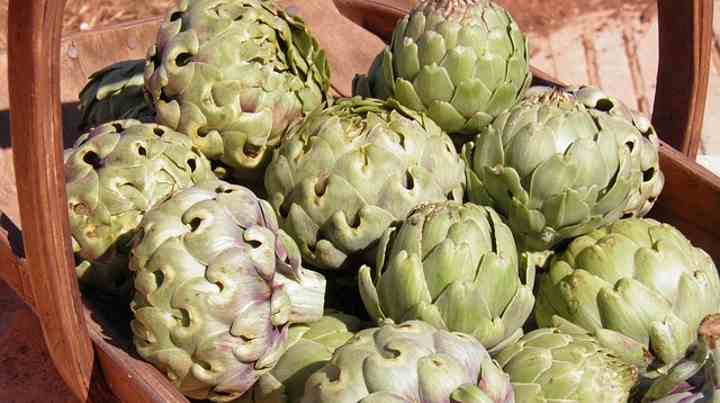
If you keep Globe artichokes safe throughout the winter, they’ll become perennial veggies. In the garden, long stems may stretch up to 5 feet (1.5 meters). The large globose flower bud is the edible portion of the vegetable. The artichoke “heart,” which is subsequently cooked, steamed, or fried, is exposed by removing the majority of the outer layer.
The entire head may alternatively be refined, and olive oil or hummus is poured over the individual leaves. The bulb develops fuzzy purple blooms if it is left to develop in the garden. In zones 7 and above, the perennial is hardy.
Jerusalem Artichokes (Helianthus tuberosus)
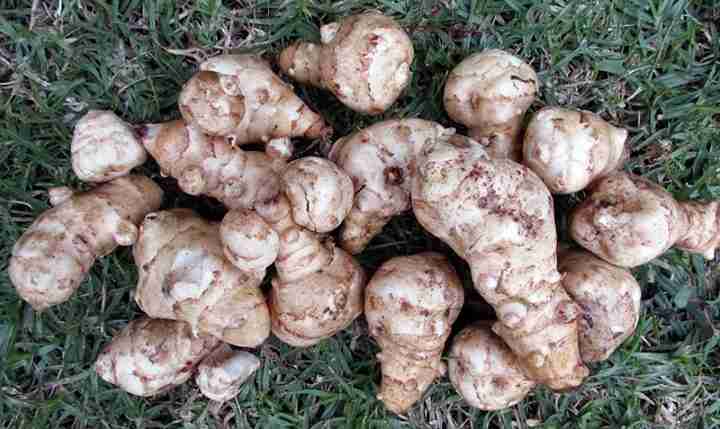
Jerusalem artichoke is a relative of the sunflower, despite its name. It belongs to the Asteraceae family of plants. Long stems with huge yellow blooms characterize these perennial herbaceous plants. This perennial food’s tuberous roots are what you eat.
These vegetables spread quickly in the earth and are also known as sunroot tubers or sunchokes. You cook and eat the roots in the same way that you would potatoes. To zone 2, Jerusalem artichokes are hardy perennials.
Sorrel (Rumex acetosa)
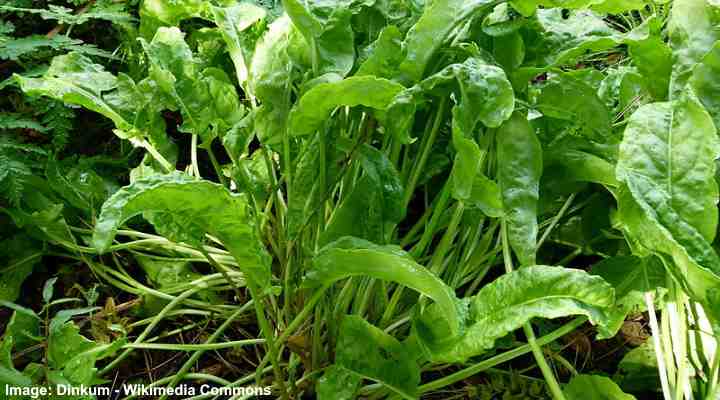
When cooked, sorrel has a tangy, citrusy flavor with a green leafy plant. Raw sorrel leaves have a sour flavor and grow to about 24 inches (60 cm) high. Salads, soups, sauces, and stews are all great ways to enjoy leafy greens. In many countries, sorrel is a popular green leafy vegetable. This is a common perennial green to forage because sorrel grows abundantly in the wild.
Plant sorrel in a sunny location with some partial shade if you want to harvest it for eating. In the spring, the leaves taste better when eaten. In zones 5 and above, the green leafy vegetable is hardy.
Broccoli (Perennial Nine-Star Broccoli)

Broccoli is a plant that grows as a perennial or an annual, depending on the variety. Broccoli is related to cabbage because it belongs to the Brassicaceae family. Broccoli is a seasonal vegetable that grows best in the winter. The cultivars ‘Nine-Star’ and ‘Purple Cape,’ on the other hand, are excellent perennials.
Broccoli sprouts are the result of growing broccoli types with long lobed leaves. Cut off the flowering stems before they go to seed to keep your broccoli growing year after year.
Onions (Allium cepa)

you may harvest the tubular green shoots of several onion species, which grow as perennial edible plants. Scallions (spring onions) are comparable to these onion shoots. These perennial greens may be eaten raw in salads or stir-fried. Harvesting some of the small bulbs is another way to use perennial onions in cooking.
These turn into pearl onions in the spring. You’ll get little shallot-like onions in early fall if you leave them to die off over the summer. In zones 4 to 8, onion plants will grow well in full sun.
Chives (Allium schoenoprasum)

You can deduce that chives are connected to onions and garlic based on their Latin name. You can eat these greens fresh in salads or sandwiches, and they’re also perennials. These plump perennial herbs produce slender green grasslike leaves from bulbs and clumps of them.
Just clip a few leaves off and chop to use in salads if you want to enjoy these greens. In zones 4 to 8, these hardy perennial Alliums grow.
Sweet Potato (Ipomoea batatas)
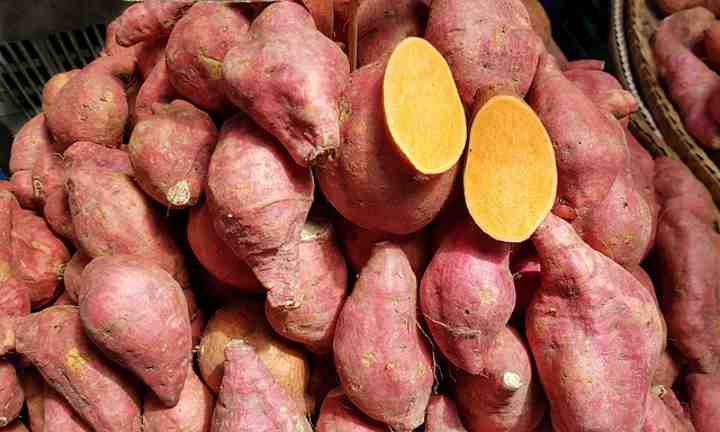
Another kind of perennial vegetable grown as an annual is sweet potatoes. This perennial tuber, on the other hand, can be left to grow in the ground year after year if you live in warm climates. Vining stems and large leaves are used by some gardeners for ground cover.
Various pollinators are drawn to the garden by the trumpet-like beautiful flowers. To make a delicious meal, you can harvest some of the sweet potato tubers.
Watercress (Nasturtium officinale)
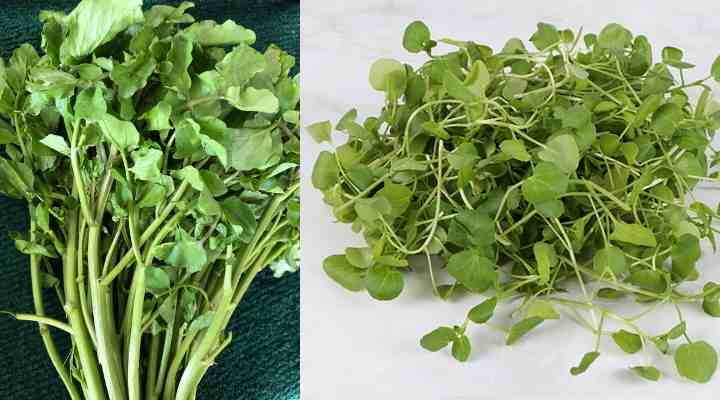
Watercress is a peppery spice herb that adds flavor to salads. It is an herbaceous perennial green. This tough aquatic plant is said to be the earliest leaf vegetable eaten by humans, according to certain reports. The thin stems and small green leaves of the family Brassicaceae have a strong, pungent taste.
Watercress can be grown in any garden with moist soil. Therefore, plant it near a pond or in an area of your lawns with poor drainage.
Good King Henry (Chenopodium bonus-henricus)

The popular perennial vegetable Good King Henry has tasty leaves and stems. There is nothing inferior about the flavor of this delectable vegetable, which is also known as “poor man’s asparagus.” The edible plant has huge, broad, diamond-shaped leaves and a slender stem that tapers to a spike.
It grows up to 30 inches (80 cm) tall. In the spring, the succulent stalks are picked, cleaned, and prepared like asparagus. Pick the leaves in the fall and cook them like spinach, then eat them. In zones 3 and above, Good King Henry is hardy.
Lovage (Levisticum officinale)

In recent decades, lovage has been relegated to the status of an old herb. Celery has a stronger flavor than the perennial plant, which is similar to celery. Edible parts of the plant include leaves, stems, seeds, and roots. This plant is easy to grow and requires little maintenance.
This herbaceous plant has stems that can grow up to 8 feet tall (2.5 meters). Therefore, you don’t need to grow a lot of it if you want to eat it in salads, soups, or stews. Zone 4 is where lovage can be found.
Sea Kale (Crambe maritima)
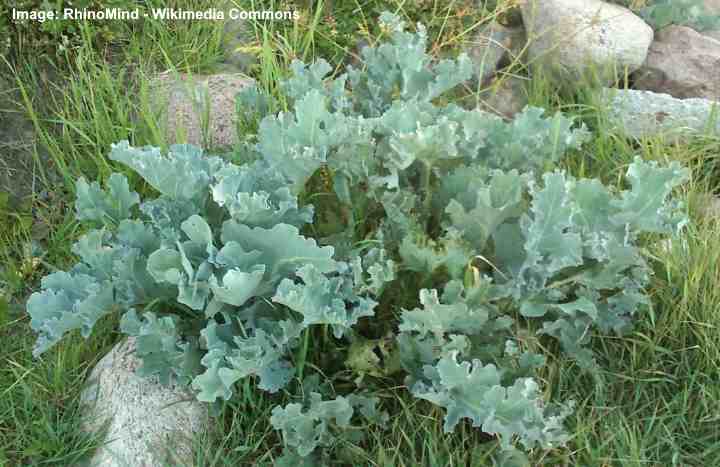
Plant sea kale in your garden if you want to grow a superfood that lasts for years as a perennial edible plant. Every year, a leafy mound develops from this cruciferous vegetable. Sea kale is difficult to find due to its difficulty in traveling. You’ll have to grow it in your yard if you want to eat this asparagus-like dish.
Cook the shoots and leaves of regular kale in a similar manner to asparagus. In zones 4 and above, sea kale thrives in light, sandy soil.
Radicchio (Cichorium intybus)
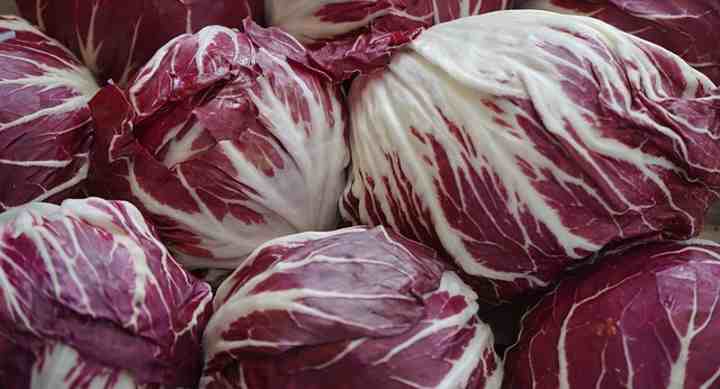
Radicchio is a tiny cabbage with burgundy leaves and pure white stems that looks like a small chicory. In most climates, it will reappear every year. The spicy, bitter flavor of this leafy perennial vegetable improves when grilled. A common caffeine-free coffee alternative is roasted chicory. Zones 4-8 are suitable for radicchio.
Rhubarb
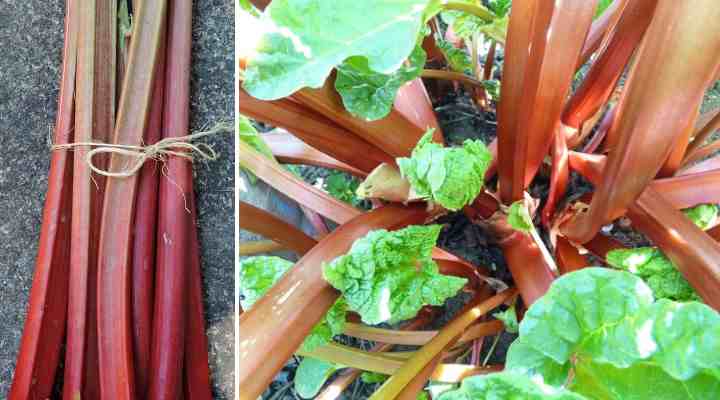
Although rhubarb stems are sometimes used in cakes and pies, they are actually a vegetable. For years, rhubarb may be grown in gardens, and it provides a rich yearly supply of tart red stems. The edible stems develop fully normally over three years. After that, you can bake rhubarb pie or other sweet desserts using the stalks you’ve harvested. In zones 3 and above, grow rhubarb as a perennial edible plant.
Dandelions (Taraxacum)

Dandelion is a perennial herbaceous plant that can be consumed, despite the fact that it is often considered a weed. The taproot, blossoms, leaves, and stems may all be eaten. For example, you may use them in a stir-fry or soup after blanching the leaves. Dandelion root can also be roasted and used in root vegetable recipes.
Dandelion root is used to make dandelion tea, which is a caffeine-free alternative to coffee that’s dried and roasted. This perennial edible plant keeps growing back no matter how much you chop off its leaves and stems. Several gardeners give it a negative reputation as a pest because of its invasive nature.
